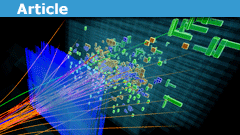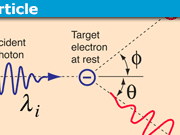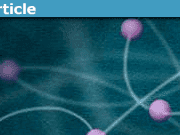A Beginner Physics Guide to Baryon Particles
Table of Contents
Introduction
At the beginning of the 20th century, it was thought that all matter consisted of only three particles: the electron, the neutron, and the proton. The major outstanding question was how the neutrons held the positively charged protons together within the atomic nucleus.
In the search to answer that question, however, it was found that the proton and neutron were not elementary particles at all, but each was composed of three elementary quarks. Furthermore, a menagerie of additional elementary and composite particles was discovered. The centerpiece is the set of eighteen baryons: particles, like the proton and neutron, composed of three lightweight quarks. This Insight provides an introduction to these baryons, whose discovery and classification constitute perhaps the first great achievement of what is now known as the standard model of particle physics.
In particular, it is shown why there are precisely eighteen such particles and why they divide into two main groups: the decuplet (ten particles) and the octet (also known as the Eightfold Way). To do this we use only:
- The structure and symmetry of three-particle flavor states using the standard QM (Quantum Mechanical) methodology.
- The structure and symmetry of a system of three spin ##1/2## particles, again using the QM methodology.
- A law of nature, in the assumption that allowed baryon states must have completely symmetric flavor-spin combinations.
Although this article introduces the bare minimum of theory, a familiarity with the QM superposition of states, spin states and terminology would be advantageous.
Moreover, we only touch on the Group Theory which provides a mathematical foundation for the standard model.
Lightweight Quarks
There are three lightweight quarks of different flavors, known as up, down, and strange (u, d, and s).
Note that quarks have never been isolated. They appear to follow the principle of confinement, which keeps them tied up in bound states such as baryons. They also exist in quark/anti-quark pairs called mesons (middleweights), but again these do not concern us here.
Quarks carry a fractional charge compared to the elementary charge on an electron. The up quark carries a charge of ##+2/3##, and the down and strange quarks carry a charge of ##-1/3##.
The proton is a combination of two up quarks and a down quark, written as ##uud##, hence carries a total charge of ##+1##. The neutron is a combination of one up quark and two down quarks, ##udd##, hence carries a total charge of ##0##.
Quarks, like the electron, are spin ##1/2## particles. Note, therefore, that although the neutron is electrically neutral overall, it is composed of charged, spin ##1/2## quarks and does indeed exhibit a significant and measurable magnetic dipole moment.
Multi-Quark Bound States and Symmetry
The proton, neutron, and the additional sixteen baryons are each a bound state of some combination of three lightweight quarks of the three possible flavors. First, therefore, we must analyze the possible three-quark states.
Following the QM methodology we see that there are ##3 \times 3 \times 3 = 27## basis states in this case; namely, the permutations of the three characters ##u, d, s##.
$$uuu, uud, uus, udu, udd, uds, usu, usd, uss \dots$$
Nature, however, has a predisposition to symmetry and anti-symmetry, hence these basis states are building blocks of the symmetric or anti-symmetric states that nature allows. Our first sight of the baryon decuplet, therefore, comes from noticing that precisely ten completely symmetric states may be created from this basis. First, there are:
$$ddd, uuu, sss$$
Then, we have six composed of two quarks of one flavor and the third of a different flavor:
$$ddu + dud + udd, \ uud + udu + duu, \\ dds + dsd + sdd, \ ssd + sds + dss, \\ uus + usu + suu, \ ssu + sus + uss$$
Where ##+## here denotes a superposition. Note that for simplicity I have omitted the normalizing factors in this article, as this does not affect the classification. For example, a normalized state would be ##\frac{1}{\sqrt{3}}(ddu + dud + udd)##
And, finally, we have one completely symmetric state with one quark of each flavor:
$$uds + usd + dus + dsu + sud + sdu$$
Note that a completely symmetric state is one where we can interchange any two particles and get the same state we started with. For example, if we swap particles ##1## and ##3##, then:
$$ddu + dud + udd \ \rightarrow \ udd + dud + ddu = ddu + dud + udd$$
Alternatively, we could say that these completely symmetric states are invariant under the three symmetry operations that fix one particle and swap the other two. For example, the operation ##1 \leftrightarrow 3## acts on ##abc## to produce ##cba##. From this we see that ##abc## is not invariant under the operation ##1 \leftrightarrow 3##, but that ##aba## is invariant under this operation.
If we denote a state by ##\psi##, then a completely symmetric state meets the requirement that:
$$(1 \leftrightarrow 2)\psi = \psi, \ (2 \leftrightarrow 3)\psi = \psi, \ \text{and} \ (1 \leftrightarrow 3)\psi = \psi$$
We also have a single completely antisymmetric state:
$$uds – dus + dsu – sdu + sud – usd$$
If we apply any of the above symmetry operations to this state we reverse its sign; which is what it means to be antisymmetric. I.e. if we let ##\psi## denote a completely antisymmetric state, then:
$$(1 \leftrightarrow 2)\psi = -\psi, \ (2 \leftrightarrow 3)\psi = -\psi, \ \text{and} \ (1 \leftrightarrow 3)\psi = -\psi$$
Now we observe in passing that if nature demanded that the quark flavor states be completely symmetric, then we would have only ten baryons; and, if she demanded that flavor states be completely antisymmetric, then there would be only one baryon (and our universe would be very different, to say the least). Quark flavor, however, is not the whole story and we shall see shortly that quantum spin enters the picture.
We have now accounted for 11 out of the 27 states, which leaves 16 remaining states that are neither completely symmetric nor completely antisymmetric. These can, however, be broken down into a set of eight (the first indication of the baryon octet) that are antisymmetric in the first two places. The first six of these are:
$$udd – dud, \ udu – duu, \ dsd – sdd, \ usu – suu, \ dss – sds, \ uss – sus$$
(Note that the first of these will turn out to correspond to the neutron, and the second to the proton.)
The remaining two, which have one quark of each flavor, could take a number of forms. The following are chosen for reasons that we need not go into here. It is enough to check that they do indeed have the required property of being antisymmetric under the operation ##1 \leftrightarrow 2##:
$$usd – sud + dsu – sdu, \\ 2uds – 2dus + usd – sud – dsu + sdu$$
I.e. if we let ##\psi## denote either of these two states, then we have:
$$(1 \leftrightarrow 2)\psi = -\psi$$
(Note that the first combination will turn out to correspond to the ##\Sigma^0## particle; and the second to the ##\Lambda## particle.)
We also have a set of eight that are antisymmetric in the second and third particles, and a set that of eight that are antisymmetric in the first and third particles.
We will call these three sets ##\psi_{12}, \psi_{23}## and ##\psi_{13}##. We could choose any two of these sets to be our remaining 16 states, but it turns out that they are all useful, so we will keep them all on the table for now.
If we take the example of the proton, which has two up quarks and a down quark. The relevant flavor states for the proton (all antisymmetric in one pair of particles) are:
$$udu – duu, \ uud – udu, \ uud – duu$$
These will turn out to be the building blocks for the proton states.
Baryons and Quantum Spin
Quarks are spin ##1/2## particles, hence a three-quark baryon has a composite spin of either ##3/2## or ##1/2##. Anyone not familiar with QM will have to take this on trust.
Spin ##3/2## represents the only option for a completely symmetric spin state. We will denote this state by ##S_{3/2}##.
Spin ##1/2## states can be categorised as for the flavor states above: one is antisymmetric in particles ##1## and ##2##; one is antisymmetric in particles ##2## and ##3##; and, one is antisymmetric in particles ##1## and ##3##.
We will denote these by ##S_{12}, \ S_{23}## and ##S_{13}##.
Note that there are no completely antisymmetric spin states.
Combining Flavor and Spin (with a Touch of Color)
We must now introduce our law of nature. For all baryons, nature demands that the combination of flavor and spin must be completely symmetric. In fact, nature demands that baryon states must be completely antisymmetric(!). Quarks, however, also carry color and the color state, for reasons we need not go into here, must be completely antisymmetric, leaving a requirement for the flavor-spin combination to be completely symmetric.
It now remains to categorize all the possible completely symmetric flavor-spin combinations, which will lead us via the eightfold way to the baryon decuplet.
The Eightfold Way
A completely symmetric flavor-spin state can be created by the following combination:
$$\psi = \psi_{12}S_{12} + \psi_{23}S_{23} + \psi_{13}S_{13}$$
Where ##\psi_{12}## and ##S_{12}## are the appropriate flavor and spin states that are antisymmetric in particles 1 and 2 etc.
If you wish to check this, you will have to look up the relevant flavor and spin states and check the that the following hold:
$$(1 \leftrightarrow 2)\psi_{23} = \psi_{13}, \ \text{and} \ (1 \leftrightarrow 2)\psi_{13} = \psi_{23}$$
$$(2 \leftrightarrow 3)\psi_{12} = \psi_{13}, \ \text{and} \ (2 \leftrightarrow 3)\psi_{13} = \psi_{12}$$
$$(1 \leftrightarrow 3)\psi_{12} = -\psi_{23}, \ \text{and} \ (1 \leftrightarrow 3)\psi_{23} = -\psi_{12}$$
And, likewise for the spin states ##S_{12}, S_{23}, S_{13}##.
Using these identities, we find that the superposition ##\psi## above is, indeed, completely symmetric. I.e.:
$$(1 \leftrightarrow 2)\psi = \psi, \ (2 \leftrightarrow 3)\psi = \psi, \ \text{and} \ (1 \leftrightarrow 3)\psi = \psi$$
As out first example, we take the proton, which has two up quarks and a down quark. The proton is:
$$p = (udu – duu)S_{12} + (uud – udu)S_{23} + (uud – duu)S_{13}$$
And that is a proton in a nutshell! It’s a particular superposition of (antisymmetric) quark flavor and (antisymmetric) spin ##1/2## states, which combine to produce a completely symmetric overall state called the proton.
In contrast, the neutron is the following superposition of states involving two down quarks and one up quark:
$$n = (udd- dud)S_{12} + (dud – ddu)S_{23} + (udd- ddu)S_{13}$$
The neutron and the proton, as nature demands and as can be checked, are completely symmetric states:
$$(1 \leftrightarrow 2) p = (2 \leftrightarrow 3) p = (1 \leftrightarrow 3) p = p, \\(1 \leftrightarrow 2) n = (2 \leftrightarrow 3) n = (1 \leftrightarrow 3) n = n$$
The other six baryons are constructed similarly, with each different completely symmetric state representing a distinct particle. This explains the existence of the baryon octet of particles with similar and contrasting properties, determined by the symmetry of their construction. For example, the ##\Sigma^+## particle follows the same pattern as the proton, with the down quark replaced by a strange quark; and the ##\Sigma^-## particle has the same pattern as the ##\Sigma^+##, with the up quarks replaced by down quarks. I.e.:
$$\Sigma^+ = (usu – suu)S_{12} + (uus – usu)S_{23} + (uus – suu)S_{13}$$
$$\Sigma^- = (dsd – sdd)S_{12} + (dds – dsd)S_{23} + (dds – sdd)S_{13}$$
Note that the proton is the only fully stable baryon. A free neutron decays into a proton (plus an electron an anti-neutrino) with an average life expectancy of about fifteen minutes. Neutrons can survive, however, when bound with protons in an atomic nucleus. Compared to the other baryons this is very stable. The next longest-lived baryons survive for only about ##10^{-10}s## before decaying: barely long enough to be detected fleetingly in a hydrogen bubble chamber immediately after their creation. This explains why these particles were only discovered in specialized experiments in the second half of the 20th century.
The Baryon Decuplet
We now return to the ten remaining baryons that form the decuplet.
We saw that there are ten completely symmetric flavor states, which we can combine with the completely symmetric spin ##3/2## state to form a completely symmetric baryon state. The decuplet, like the octet, represents a set of particles with similar and contrasting properties. They are all spin ##3/2## particles that are further defined by their strangeness and electric charge.
There are four particles in the decuplet with strangeness zero (no strange quarks), which are the ##\Delta## particles:
$$\Delta^{++} = (uuu)S_{3/2}, \\ \Delta^+ = (uud + udu + duu)S_{3/2}, \\ \Delta^0 = (ddu + dud + udd)S_{3/2}, \\ \Delta^{-} = (ddd)S_{3/2}$$
(Note that the ##\Delta^{++}## has an electric charge of ##+2##, which is somewhat unique.)
The three ##\Sigma^*## particles have strangeness ##-1## (one strange quark):
$$\Sigma^{*+} = (uus + usu + suu)S_{3/2}, \\ \Sigma^{*0} = (uds + usd + dus + dsu + sud + sdu)S_{3/2}, \\ \Sigma^{*-} = (dds + dsd + sdd)S_{3/2}$$
The two ##\Xi^*## particles have strangeness ##-2##:
$$\Xi^{*0} = (uss + sus + ssu)S_{3/2}, \\ \Xi^{*-} = (dss + sds + ssd)S_{3/2}$$
And, finally, there is the ##\Omega^{-}## particle with strangeness ##-3##:
$$\Omega^{-} = (sss)S_{3/2}$$
This particle was discovered at Brookhaven National Laboratory on Long Island in 1964 and represented the last piece in the decuplet puzzle, confirming the quark model that predicted it. Baryons tend to decay into other baryons with fewer strange quarks. The ##\Omega^{-}## (strangeness ##-3##) was identified through a sequence of decays into baryons of increasingly less strangeness: first to a ##\Xi^0## (strangeness ##-2##), then to a ##\Lambda^0## (strangeness ##-1##) and finally to a stable proton (strangeness ##0##).
(Note that at some point strangeness got defined the “wrong way round”, as the strange quark is deemed to have strangeness of ##-1##.)
The baryons in the decuplet are even less stable than those in the octet, again explaining that their fleeting existence is only confirmed by specialized experiments to create them for a few instants before they decay.
Concluding Remarks
The purpose of this Insight was to explain, as simply as possible, the existence of precisely eighteen baryons, subdivided into an octet of spin ##1/2## particles and a decuplet of spin ##3/2## particles; each of which is a set of particles defined by their strangeness and electric charge. To see this we considered only the quark flavor and spin states.
The full picture for these particles includes additionally the property of color, which was only touched on here, but which explains the strong nuclear force through the theory of QCD (Quantum Chromodynamics).
Quarks also possess the property of interbal isospin, which underpins the concept of electric charge.
Particle decays, meanwhile, are explained through the weak interaction.
By neglecting these considerations, it was hoped that the theory of baryons could be made accessible to a wider audience.

BSc in pure mathematics (1984). Retired from a career in Information Technology in 2014. I divide my time between studying physics when I’m home in London and mountaineering.
Favourite area of physics is Quantum Mechanics.










I think what fresh_42 means is that giving an explanation without the math requires you to simplify things so much that you lose almost all the intricacies and useful details. This makes the explanation useless to anyone aiming to do useful work on the topic and is only suitable for those who literally cannot understand the required math. Like myself.
That doesn't explain anything. It is only another colorful kindergarten picture.
It all depends on what you call "explain". Crayons have their limits. You can't even explain what a quark is without math. Painting a colored circle doesn't explain anything.
If you have questions about quantum physics in general, or about certain topics, feel free to create a new thread. Thank you.
Decay processes are beyond the scope of this article.
Yes, that's the general idea. Superposition is fundamental to QM. Suppose you have two particles that each can be in one of two states. Let's call these states ##\psi_a## and ##\psi_b##. Classically, if the two particles were bound together, then there would be four definite, distinct possibilities:
$$\psi_a \psi_a, \ \psi_a \psi_b, \ \psi_b \psi_a, \ \psi_b\psi_b$$
You could always look into the system and see definitely what state each of the two particles is in.
In QM, however, in addition you can have any linear combination of these basis states. The system could, for example, be in the state:
$$\frac 1 {\sqrt 2} (\psi_a \psi_b + \psi_b \psi_a)$$
If we look at this system the particles are always in different states but there is an equal probability that the first particle will be found in state ##\psi_a## and the second in state ##\psi_b## and vice versa. The critical thing is that it's not that we didn't know which particle was in which state, the particles are simply not in definite one-particle states until you measure them. This is fundamental to QM.
The interesting thing, which we saw in my article, is that the concept of superpositions creates a much richer physics (and chemistry!). If we were limited to the four definite basis states, then there would be nothing like the variety we see in elementary particle physics and chemistry.
@PeroK Can you elaborate on this? What does it mean for the proton to actually be a superposition of other states? I'm reminded of my chemistry class where we talked about a particular bonding arrangement to be a combination of three bonds. One would expect this molecule to have a 1/3 chance of being in each one of these bonds, and that it would be forced to be in one bond at a time. But that wasn't the case. Instead it was, in some respect, in all three bonds at the same time. I suppose the proton is something like that?
Maybe somebody might wonder why there are only "18 baryons" as you state at the end of the article, but the particle data booklet lists a plethora of baryons (also within the light baryons of course). The answer is of course that all these are excited states of the ones listed in your article and that lattice QCD even seems to find more such states than listed (particularly in those with strangeness).